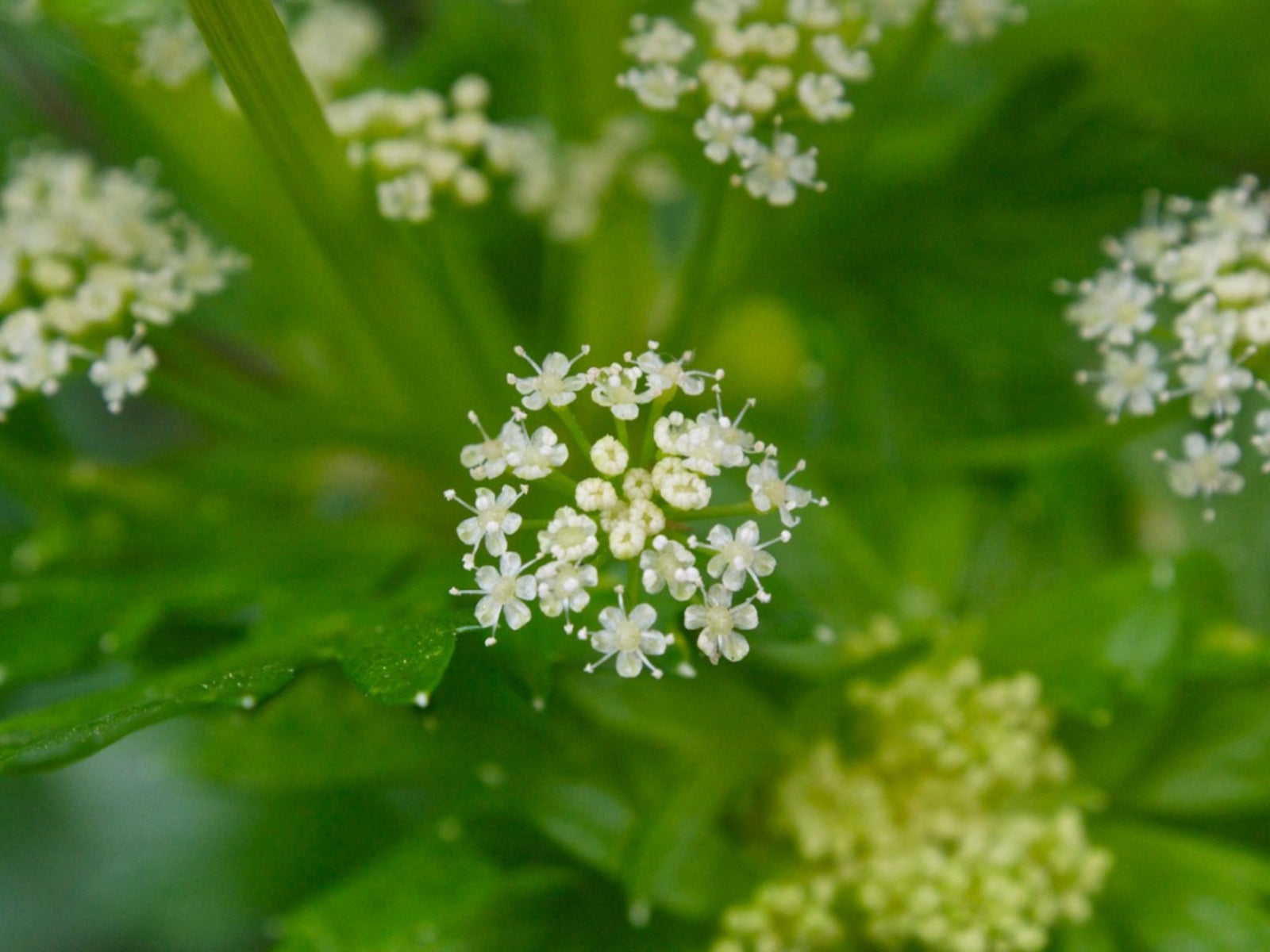My Celery Is Blooming: Is Celery Still Good After Bolting


Celery flowers will lead to celery seed, which is a good thing if you wish to harvest and store the seed for flavoring. It is a bad thing for the stalks themselves, however, as they tend to go bitter and woody with thick strings. Flowering in vegetables is called bolting and is a response to environmental and cultural cues. Bolting in celery means the plant is trying to set seed and ensure its genetic material will be carried on into more favorable growing conditions. Is celery still good after bolting? Well, it’s not going to kill you, but my guess is you would prefer chewable, crispy stalks with a sweet flavor and not the tough ones that develop after flowering occurs.
Bolting in Celery
The celery we use today is a relative of wild celery and a cultivated crop. It is a tender perennial plant that prefers partial sun, cool conditions and consistently moist but not boggy soil. Once summer temperatures heat up and the daylight hours get longer, a typical response in celery is to produce flowers. These are lovely, lacy white umbels of tiny flowers that get the pollinators going but they also signal a change in the plant itself. You can try a few tricks to extend the celery stalk season and prevent bolting celery for a few more weeks or simply enjoy the flowers and seeds and start a new batch of celery for the next year.
Why My Celery is Blooming
It can take 4 to 5 months from seeding to start harvesting your first tender, juicy celery stalks. The plant requires a long cool growing season, which means many gardeners must start seed indoors 10 weeks before planting it outside or resort to “cheats” or purchased seedlings. Soil must also be fertile, well draining but moist and slightly shady. An area with no more than 6 hours of light is preferable. Plants that bloom are doing so in response to some environmental cue. You can nip celery flowers in the bud by providing shade during the heat of the day with row covers and pinching off flowers. Harvest stalks regularly so new ones form. New, young stem growth tends to ward off flowering for a while. When a celery plant has flowers in spite of preventions, it means the plant is not experiencing correct cultural care. It is stressed, or the summer heat is simply too much for the plant and it is going to procreate.
What to Do if Your Celery Plant Has Flowers
There are some celery plants that are low to bolt, which means they flower later in the season than some other cultivars. In areas with early, hot summers, these are the best bet for a longer celery stalk season. Make sure the celery is happy in its home. This means organic rich soil that has been cultivated to a depth of at least 8 to 10 inches (20 to 25 cm.), good drainage and a consistent water supply. I find that plants grown in a dappled light area perform better than those in full sun. Cold snaps are also a potential cause of celery bolting as the plant responds to the threat of extinction by frost and wants to set seed to secure its DNA. Watch out for late season plantings when frost threatens and use cold frames or soil warming blankets to keep the plants warm.
Is Celery Still Good After Bolting?
Celery that has flowered will produce woody stems that are difficult to cut and chew. These still have flavor that can be passed onto stocks and stews, but fish out the stems before serving. Their greatest contribution may be to the compost bin unless you enjoy the flower or want the seed. My celery is blooming currently and is a 6-foot (1.8 m.) tall plant with marvelous huge umbels of fairy-like white flowers. It is attracting bees, wasps and other pollinators to help the other plants in my garden and I consider it a boon. Time enough later to compost the plant, I have decided to enjoy its architectural elegance for the time being. If you are impatient with simple visual beauty, consider that in six weeks you can harvest pungent celery seeds, which are a great addition to many recipes and once toasted have completely different complex flavor from fresh seed.
Gardening tips, videos, info and more delivered right to your inbox!
Sign up for the Gardening Know How newsletter today and receive a free copy of our e-book "How to Grow Delicious Tomatoes".

Bonnie Grant is a professional landscaper with a Certification in Urban Gardening. She has been gardening and writing for 15 years. A former professional chef, she has a passion for edible landscaping.
-
 Moody Blooms For Spring: 8 Types Of Black Flowers To Add Drama To Spring Displays
Moody Blooms For Spring: 8 Types Of Black Flowers To Add Drama To Spring DisplaysFrom midnight burgundies to inky violets, several types of black flowers can enrich and embolden a spring display. Try these brooding bloomers for a moody garden
By Tonya Barnett
-
 Can Snake Plants Live Outside? Everything You Need To Know For Snake Plants Al Fresco
Can Snake Plants Live Outside? Everything You Need To Know For Snake Plants Al FrescoSnake plants can live outside given the right conditions, but be careful that they don't take over! Learn the best way to use snake plants in your landscape.
By Mary Ellen Ellis